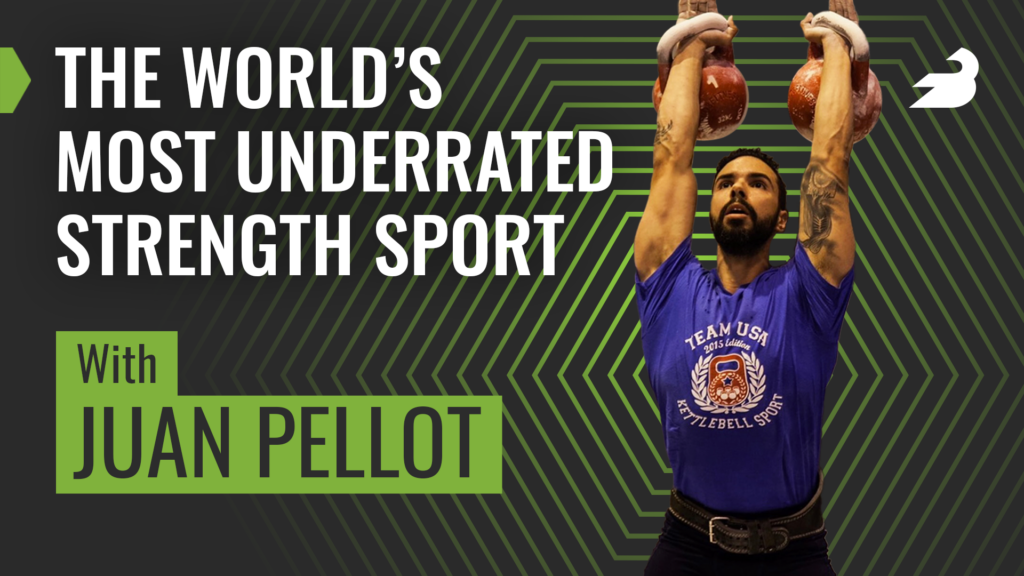Today I’m talking to kettlebell sport world champion and Master of Sport Juan Pellot. Spoiler alert: Juan is actually my coach, and I interact with him pretty darn regularly. But we’re flipping the script this time, and I’m asking Juan to dive deep on the differences between kettlebells as a training tool versus contested sport, and why the latter — a sport popular in Eastern Europe — has taken so long to catch on in the Western world. And does a kettlebell sport set really feel like doing the CrossFit workout Fran for 10 minutes straight?
In this episode of the BarBend Podcast, David Thomas Tao talks to Juan Pellot about:
- Finding kettlebell sport and early success in one of strength’s most niche disciplines (2:10)
- Some of America’s early kettlebell pioneers, including Steve Cotter (6:30)
- Progressing through kettlebell sport’s ranks, weights, and bodyweight categories (7:50)
- What does it mean to be a “Master of Sport”? (9:40)
- Why hasn’t kettlebell sport caught on more in the United States? (13:30)
- Long cycle vs. biathlon (15:00)
- Is a 10 minute long cycle set the most mentally challenging test in strength athletics? (18:20)
- Kettlebell sport technique and knowing how to force relaxation (21:30)
Relevant links and further reading:




